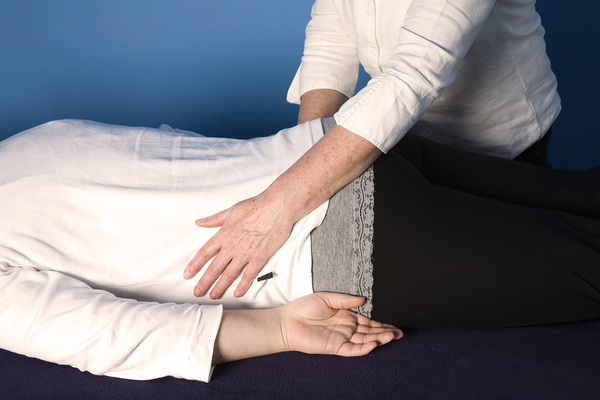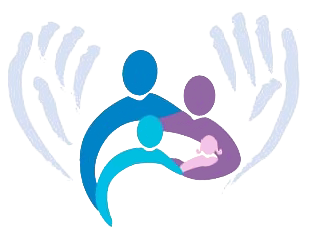Blog
5 Lifehacks to Boost Your Longevity
As we begin to understand more and more about the human body and its reactions to certain lifestyles and environments, more and more of us are acquiring an interest in learning new ways to live healthier, happier, and longer lives.
Read our tips below that will help you maximize and optimize your life.
1.) Sleep Better
Sleep at the same time every day if you’re able. Sleep for 7 hours at least, that way your body and brain can regenerate and detoxify itself.
2.) Cut Sugars and Processed Carbohydrates
Try to cut sugars and carbs from your diet. Instead of fruit smoothies, opt for veggie smoothies — they’re far healthier. Shop on the peripherals of the grocery store for clean, whole foods that will make you feel amazing.
3.) Push Yourself
We all have stores of energy we fail to utilize every day, which shows up as anxiety for many of us. Exercising to exertion releases healthy endorphins and you’ll achieve more restful sleep as a result of pushing yourself.
4.) Join a Community
Isolation is the silent killer that plagues our modern society. Instead of connecting in a chat room, join a class or some sort of community in real life, at the local level. You’ll watch your spirit and outlook improve. It will help you live a longer, healthier life as well.
5.) Visit Your Chiropractor in Ramsey, NJ
Visiting your chiropractor is great for your body and mind and is connected to all sorts of health benefits that improve your body’s functionality, boost cognitive function, and reduce your chances of getting a number of diseases and illnesses. Contact Family Chiropractic & Spinal Health Care Center today to schedule your consultation!
3 Tips for Building a Healthy, Holistic Lifestyle
As many people have begun to take interest in the pursuit of all-natural remedies for the stresses and damages caused by daily wear and tear it’s more important than ever to make sure your time, energy, and resources are spent wisely.
Keep reading for a few ways to start engaging in more healthy and more holisitc practices in your daily life to experience new levels of wellness.
1.) Exercise Intelligently
Make sure that your exercise is done outdoors when possible to maximize health benefits. Do make sure that you protect yourself from the sun, of course. Hiking, jogging, climbing, paddleboarding, and rowing are all great activities that will force you to be outdoors.
2.) Stay Away from Prescription Drugs if You’re Able
Many physicians and pharmaceutical companies may or may not be in cahoots peddling prescription drugs, so it’s important that you pursue pain relief and personal optimization the all-natural way.
3.) Visit Your Local Chiropractor in Ramsey, NJ
Chiropractic care offers an all-natural drug-free solution to paients suffering from back, neck, and leg pain, not to mention headaches, insomnia, sciatica, fibromyalgia, and a host of additional health conditions. Contact Family Chiropractic & Spinal Health Care Center today to schedule a consultaiton to see for yourself.
Chiropractic Care for Seniors
It is a common misconception that chiropractic care is only for the young and athletic. The truth is, there are a number of amazing benefits chiropractic care can offer seniors. Unfortunately, many seniors are unaware of these benefits.
The Benefits of Chiropractic Care for Seniors
There are a wide number of benefits and advantages available to seniors through chiropractic care, such as:
- pain relief
- increased range of motion
- increased balance and coordination
- decreased joint degeneration
- increased health and well being
- decreased incidence of falling
- keeping seniors out of nursing homes
Medical Research Supports the Benefits of Chiropractic Care for Seniors
Aches and pains don’t have to be a part of growing older. There is no need for seniors to suffer needlessly. Chiropractic provides amazing benefits and has an outstanding record of safety and effectiveness.
Consider these findings of recent medical research:
- Seniors who used chiropractic care were more likely to engage in regular exercise.
- 44% of those who used chiropractic care reported having arthritis compared with 66% in the non-chiropractic care group
- At three years follow-up, less than 5% of those who used chiropractic care lived in a nursing home compared to a staggering 48% of those who did not use chiropractic care.
If there is a special senior in your life that is struggling with pain, discomfort, immobility or other issues inhibiting their mobility and active lifestyle, then it may be time to consider regular chiropractic care.
Contact Family Chiropractic & Spinal Health Care Center today to schedule your consultation.
Should I Pursue Chiropractic Care While Pregnant?
Chiropractic care is a powerful and effective drug-free pain management solution for patients coming from all walks of life and at every stage of their lifespan. Chiropractic works wonders for babies, seniors, adults, and, yes, even women who are in various stages of pregnancy.
Below are a few reasons women should explore chiropractic care during pregnancy.
Pregnancy is Hard on Your Body
Your body will definitely change over the course of pregnancy in ways like protruding abdomen, increased back curve, pelvic changes, not to mention postural adaptations. Chiropractic care is beneficial in establishing pelvic balance and alignment for women during pregnancy.
Chiropractic Benefits for Our Pregnant Patients
Chiropractic care offers a host of benefits to pregnant patients, including:
- Establishing and Maintaining a Healthy Pregnancy
- Nausea Control
- Reduced Labor Time and Delivery TIme
- Relieves Back Pain
- Relieves Neck Pain
- Relieves Joint Pain
- Helps Prevent Cesarean Delivery in Some Cases
If you have any additional questions about how chiropractic care can benefit you during pregnancy, contact Family Chiropractic & Spinal Health Care Center today to schedule your one-on-one consultation.
Chiropractic as We Advance in Age
Chiropractic care is something that can be taken advantage of by patients of all ages, no matter what part of their lifespan they’re in. It’s true that many of our patients are of adult age. We also have more than a few who are more advanced in age. Our older patients actually stand to gain some of the most immediate and recognizable benefits from chiropractic care treatments.
Family Chiropractic & Spinal Heath Care Center would like to go over a few ways that chiropractic adjustments and other treatments offered at our practice benefit senior patients.
As We Age Our Bodies Change
When we get older, just like with our automobiles, certain parts of our bodies stop working the way they used to. We might start to feel arthritic pain from old sports injuries or performing the same motions over and over again. Have you been playing pick-up basketball with the same group into your 50s and 60s? Well, you’re likely going to experience some wear and tear from that. Chiropractic adjustments can help you deal with pain, improve flexibility, and boost your range of motion.
Chiropractic Treats a Variety of Age-Related Conditions
As our bodies age, there are many factors that can contribute to pain and discomfort in bones, joints and muscles.
- Osteoporosis
- Arthritis
- Joint Pain
- Back Pain
- Spinal Discomfort
- Subluxation
- General Pain
- Disrupted Range of Motion
- Morning Stiffness
- And Much More…
Give Family Chiropractic & Spinal Heath Care Center a call today to schedule your consultation if you or someone you know could benefit from our chiropractic treatments.
Chiropractic Care for Kids
For our youngest patients at Family Chiropractic & Spinal Health Care Center we provide chiropractic treatments and adjustments that can help treat things like ear infections, growing pains, sports injuries, and more.
It’s a common misconception that only those more advanced in age and those who experience an injury and seek drug-free, all-natural solutions are the only folks who stand to gain the tremendous benefits that chiropractic care has to offer.
However, children are some of our patients who experience some of the most pronounced benefits from chiropractic care — and it’s great to start chiropractic treatments at a very early age. Family Chiropractic & Spinal Care Health Center offers our innovative chiropractic care services to our infant, toddler and other child-aged patients.
Chiropractic care is crucial in detecting musculoskeletal and nerve problems early on, which will help prevent more serious conditions down the road for your child.
Pediatric chiropractic care helps treat the following conditions that occur commonly in children:
- Ear infections
- Neck Pain
- Back Pain
- Leg Pain
- Shoulder Pain / Arm Pain
- Scoliosis
- Sports injuries
- Spinal Health Issues
- TMJ (Temporomandibular Joint Syndrome)
- And More!
We can continually monitor the development of the spine, muscles, joints and nervous systems of our younger patients, which helps ensure proper growth.
If you have any questions about how our chiropractic services can help your children, contact Family Chiropractic & Spinal Health Care Center today to schedule your consultation.
Your End of Q2 Wellness Check-In
Family Chiropractic & Spinal Health Care Center likes to check up on our patients to make sure they’re achieving their annual wellness goals. Since many of us make New Year’s Resolutions at the beginning of the year, the transition from May to June is a perfect time to check up on where you’re at and determine where you need to be in order to achieve your health and wellness goals for 2019.
How Do You Feel?
If you’ve been making healthy choices, chances are they’re going to be paying off in the way you feel. Pay attention to your body. If you’re feeling weaker than you feel you should, incorporate more strength training. Same goes for your cardio. If you’re in pain, schedule a consultation with Family Chiropractic & Spinal Health Care Center.
Where Can You Improve?
There are probably multiple areas, whether that be staying on top of your appointments with your chiropractic care specialist, keeping up on your yoga routine, and incorporating mindfulness exercises, that you can probably improve upon.
Make Adjustments
If you’ve hit a rut, now is the time to switch up your routine to blast yourself into orbit.
If you experience any pain or discomfort during work or play, contactd Family Chiropractic & Spinal Health Care Center today to schedule your consultation.
Incorporating Yoga into Yoga Daily Grind
Yoga is an excellent companion to chiropractic care when it comes to relieving your back, neck, spine, legs, and even your mind from the daily/weekly grind.
But, the truth is, the busier we get, the more taking care of ourselves seems to get put on the backburner. The sad reality is that by neglecting our own wellness, we’re actually being less effective at work and even in our extracurricular activities. Below are a few quick, easy ways you can incorporate yoga into your daily routine.
Work Yoga
If you’re sitting at a desk or even standing for long periods at work, take a time out to stretch. If you know some yoga moves, this is the perfect time to incorporate them, relieving the body of being in uncomfortable positions that put strain on your neck, back, hips, and legs.
Spring for a Yoga Class
If you can pony together the funds, try to take a yoga class if even for a short period of time, this way you can establish your base knowledge and do your yoga practice more effectively on your own.
Yoga as Active Recovery
We may think that we have a free pass on days off to do absolutely nothing, and, although we might feel justified, it’s actually a better idea to be a little bit active on your recovery days, by taking a hike or doing some yoga, for instance. You’ll still be giving your body its much-needed rest while also crossing off one of your boxes, so to speak.
If you have any questions about how you can incorporate yoga and chiropractic care into even the busiest schedule, contact Family Chiropractic & Spinal Health Care Center center today to learn more.
The 3 “Cs” of Quality Chiropractic Care
A quality chiropractic care practice should be excellent in a variety of categories, not simply just excellent at the services and treatments they provide. It is a chiropractor’s duty to provide an atmosphere where their patients can feel looked after and cared for.
Below are the 3 “Cs” of quality chiropractic care and should be used as a benchmark when you’re selecting the best chiropractor for you.
1.) Compassionate Care
Your chiropractor should have an idea what it’s like to live with pain. Many have had injuries they’ve had to rehabilitate from themselves. Basically, you’ll want to select a chiropractic care specialist who is going to treat you like a member of their own family.
2.) Cutting-Edge Treatments
Your chiropractor should be well-versed in the latest treatment methods and should also pay attention to additional health and wellness developments in categories like diet, exercise, recovery, rehabilitation, and more.
3.) Clear Results
Your chiropractic treatments should be showing you improvements in pain relief as well as in your general wellness. If it didn’t work, it would not be the enduring medical treatment and drug-free alternative to medication and surgery that it is today.
If you have any questions about how chiropractic care can benefit your life on a daily basis, contact Family Chiropractic & Spinal Health Care Center today.
How to Achieve More Restful Sleep
Achieving more restful sleep can be easier said than done in today’s “grind” culture. Many of us resort to caffeine to fuel our day, some of us drinking coffee or energy drinks throughout the day, which can interrupt our sleep cycles like nobody’s business.
Below Family Chiropractic & Spinal Health Care Center goes over a few ways you can achieve more restful sleep, which will increase your productivity and your quality of life!
1.) Visit Your Chiropractor
Did you know that chiropractic adjustments can help you achieve a more restful night’s sleep? There are not many things in this world more soothing and relaxing than a visit with your chiropractor in Ridgewood, NJ. Chiropractic can help relax and calm you, reduce your overall anxiety, and improve cognitive function.
2.) Stay Active
A big part of why some of us can’t get a good night of sleep is that we still have excess energy to burn at the end of the day. Want to know the antidote for that? Rigorous exercise! You’ll be surprised and delighted how good you sleep after pushing your body to exertion.
3.) Do Yoga and Meditation
Yoga and meditation (both of which often go hand-in-hand) are both great ways to increase relaxation and help you achieve better sleep.
If you have any additional questions about the ways you can improve your sleep through chiropractic treatments, contact Family Chiropractic Spinal Care Center for your consultation today.



